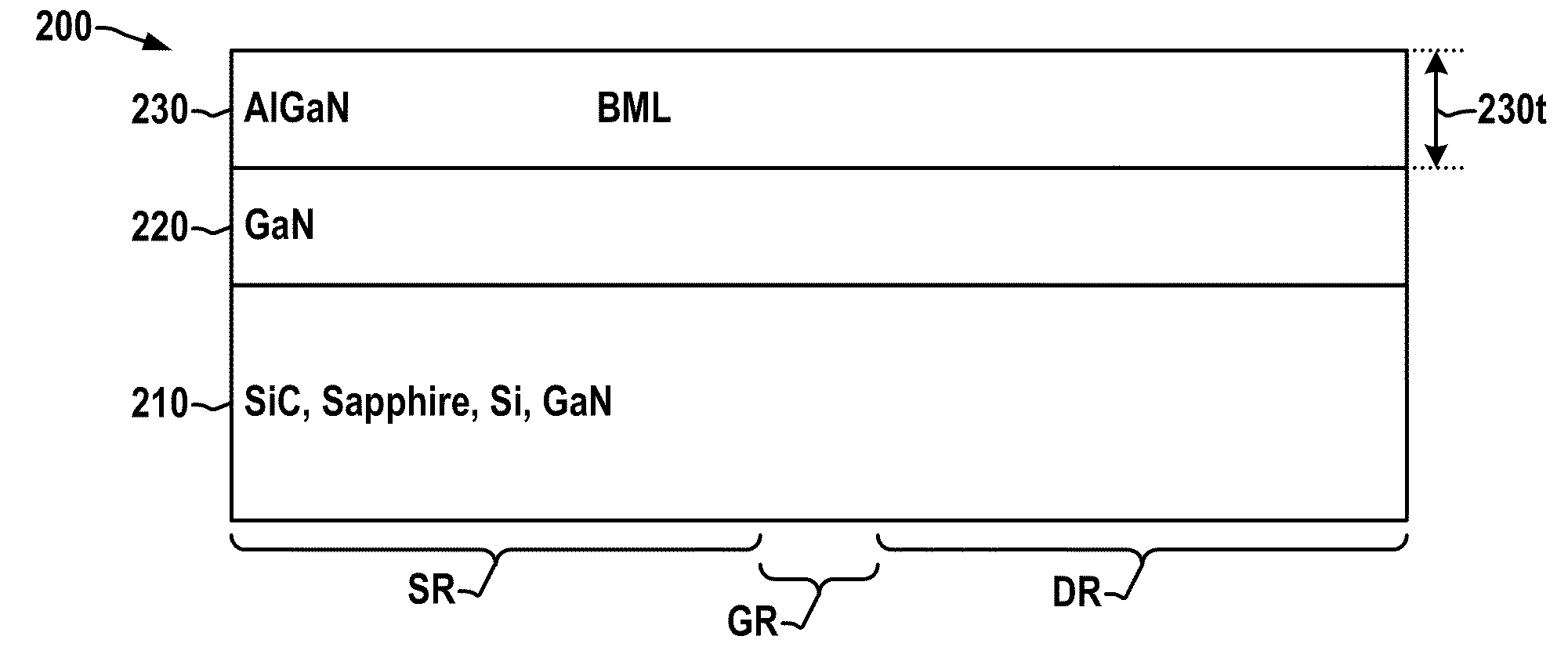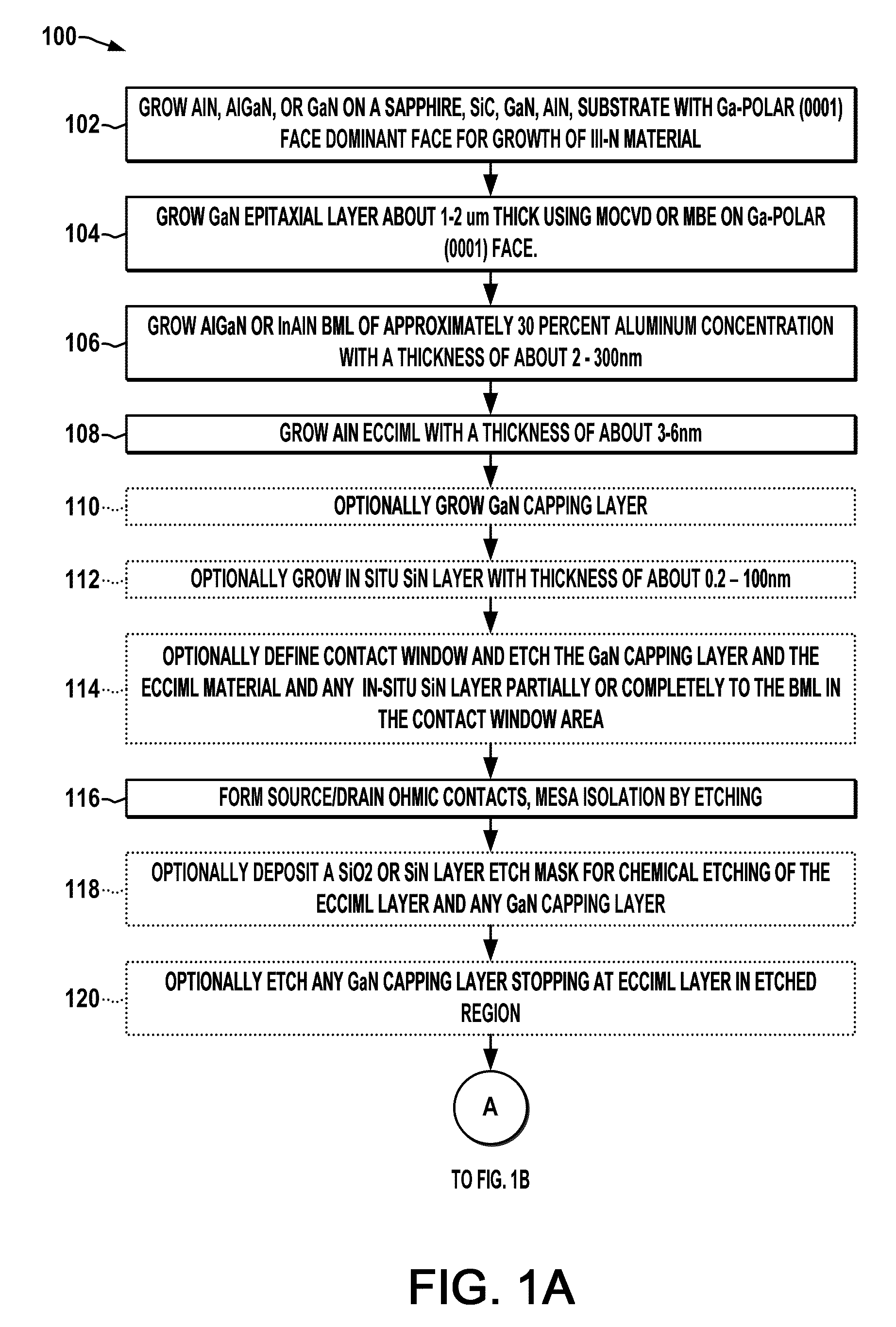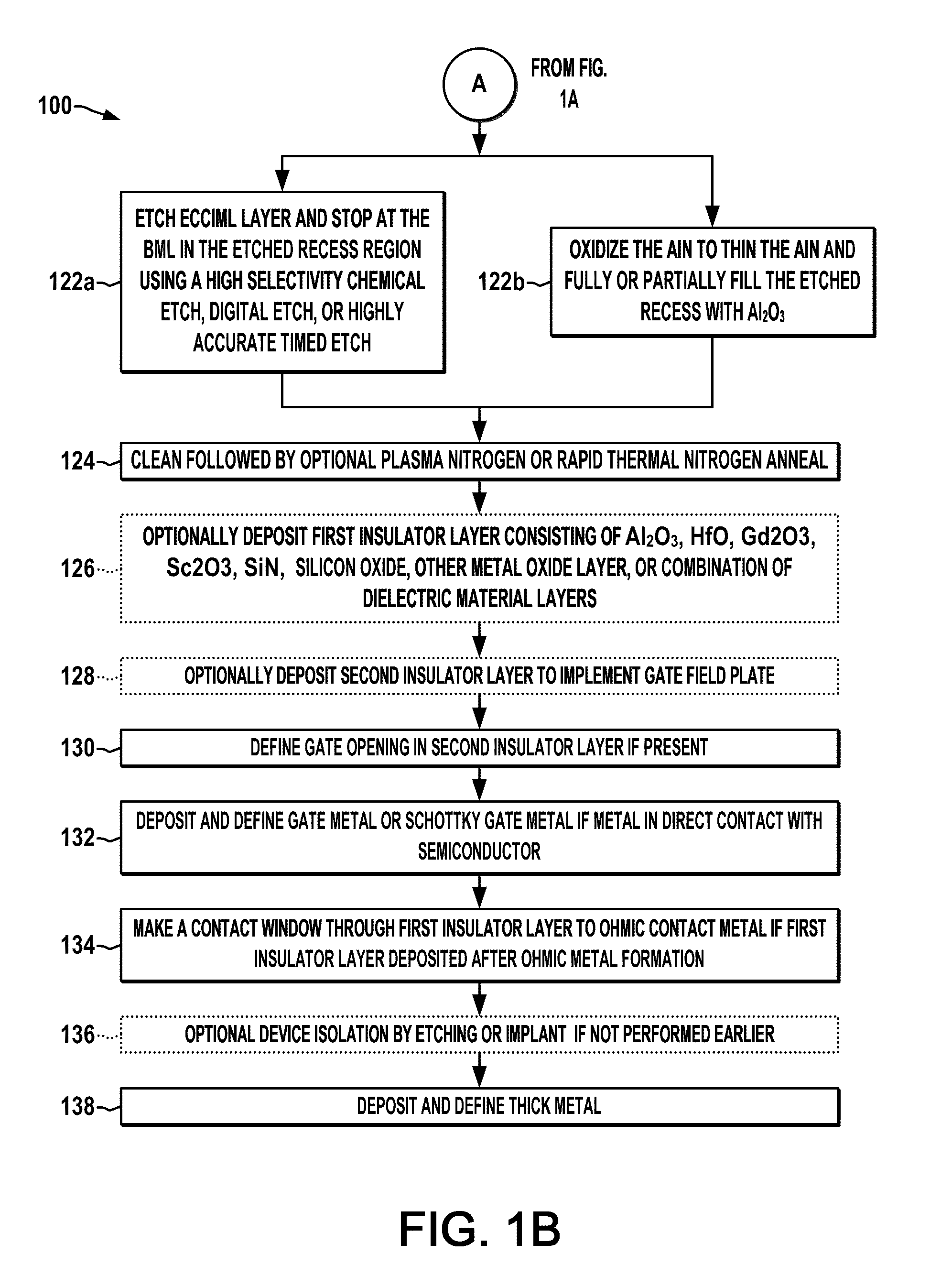Transistor with Enhanced Channel Charge Inducing Material Layer and Threshold Voltage Control
- Summary
- Abstract
- Description
- Claims
- Application Information
AI Technical Summary
Benefits of technology
Problems solved by technology
Method used
Image
Examples
Embodiment Construction
[0017]One or more embodiments or implementations are hereinafter described in conjunction with the drawings, where like reference numerals are used to refer to like elements throughout, and where the various features are not necessarily drawn to scale. The disclosure provides transistors and fabrication methods to facilitate precise, uniform, and repeatable FET threshold voltage control via control over the BML thickness, along with low source-drain access impedance through use of an enhanced channel charge inducing material layer (or layers) (ECCIML) in the source and drain access regions. The disclosure finds particular utility in connection with GaN, AlN, AlGaN, InGaN, InAlN, InAlGaN material systems having at least one heterojunction and either polar, semi-polar, or non-polar material, and the resulting transistors can be used for enhancement or depletion mode applications, including normally-off power switching devices with high mobility, enhancement mode transistors for enhanc...
PUM
 Login to View More
Login to View More Abstract
Description
Claims
Application Information
 Login to View More
Login to View More - R&D
- Intellectual Property
- Life Sciences
- Materials
- Tech Scout
- Unparalleled Data Quality
- Higher Quality Content
- 60% Fewer Hallucinations
Browse by: Latest US Patents, China's latest patents, Technical Efficacy Thesaurus, Application Domain, Technology Topic, Popular Technical Reports.
© 2025 PatSnap. All rights reserved.Legal|Privacy policy|Modern Slavery Act Transparency Statement|Sitemap|About US| Contact US: help@patsnap.com



